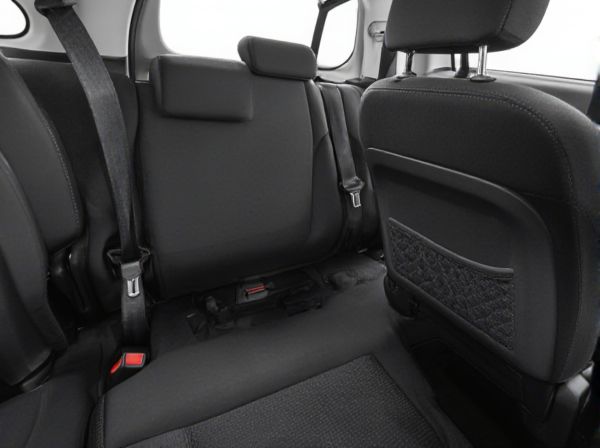
Photo illustration: Low Back Seat vs High Back Seat
Choosing between a low back seat and a high back seat depends on your need for support and comfort. High back seats provide greater upper back and neck support, ideal for long drives or individuals requiring extra stability. Low back seats offer more flexibility and a sportier feel but may lack comprehensive back support for extended use.
Table of Comparison
| Feature | Low Back Seat | High Back Seat |
|---|---|---|
| Support Level | Lower back and lumbar support only | Full back, shoulder, and neck support |
| Comfort | Basic comfort for short drives | Enhanced comfort for long journeys |
| Safety | Limited head and neck protection | Improved safety with headrest and side support |
| Price | Generally more affordable | Typically higher price due to added features |
| Space Efficiency | Compact, saves space in smaller vehicles | Requires more cabin space |
| Use Case | Best for city driving and short trips | Ideal for long-distance travel and enhanced safety |
Introduction to Low Back and High Back Seats
Low back seats offer minimal lumbar and upper back support, typically featuring a shorter backrest that enhances mobility and reduces cost, making them suitable for budget-conscious drivers or vehicles designed for short trips. High back seats extend well above the shoulders, providing comprehensive support for the entire spine, neck, and head, which improves comfort and safety during long drives or high-impact situations. Choosing between low back and high back seats depends on the vehicle type, intended use, and desired balance between ergonomic support and flexibility.
Key Differences Between Low Back and High Back Seats
Low back seats provide minimal upper back support, enhancing freedom of movement but offering less protection in case of a rear impact, making them common in sports cars and racing vehicles. High back seats extend support to the shoulders and neck, improving comfort and safety by reducing whiplash risk, often preferred in family cars and trucks. The choice between low back and high back seats impacts ergonomics, safety standards, and vehicle design preferences.
Ergonomics: Comfort and Posture
Low back seats promote greater freedom of movement but may lack sufficient lumbar support, potentially causing discomfort during extended periods. High back seats provide enhanced ergonomic benefits by supporting the entire spine, encouraging proper posture and reducing fatigue. Optimal comfort and posture balance depend on individual needs and task duration, with high back seats generally favored for prolonged use.
Safety and Support Considerations
High back seats offer superior safety by providing enhanced head, neck, and spine support, reducing the risk of whiplash in accidents. Low back seats may lack adequate upper body support, potentially increasing injury severity during collisions. Ergonomic design in high back seats promotes better posture and comfort, contributing to overall driver and passenger well-being.
Design and Aesthetics Comparison
High back seats offer extended support for the upper back and neck, often featuring integrated headrests and contoured designs that enhance comfort and provide a sleek, modern look ideal for executive and luxury vehicles. Low back seats emphasize minimalism with a streamlined silhouette that appeals to sporty or compact car interiors, offering greater freedom of movement and visibility while maintaining a lightweight aesthetic. Both designs optimize ergonomic principles, but high back seats prioritize comprehensive support and premium appearance, whereas low back seats focus on agility and open cabin ambiance.
Suitable Vehicles for Low vs High Back Seats
Low back seats are typically suitable for vehicles like compact cars, hatchbacks, and some SUVs where space optimization and rear visibility are priorities, providing a minimalist design that fits well in smaller cabins. High back seats are ideal for larger vehicles such as full-size SUVs, luxury sedans, and trucks, offering enhanced support, safety, and comfort for extended drives and accommodating taller passengers. Choosing between low and high back seats depends on the vehicle's size, intended use, and the level of comfort and safety required by the occupants.
Impact on Driving Experience
Low back seats offer increased rear visibility and a greater sense of openness, enhancing situational awareness during driving. High back seats provide superior lumbar and neck support, reducing driver fatigue on long trips and improving overall comfort. The choice between low and high back seats significantly influences ergonomic support and driving posture, directly impacting control and safety.
Installation and Maintenance
Low back seats offer easier installation due to their lightweight design and minimal attachment points, making them ideal for quick setups and replacements. High back seats provide enhanced stability and safety but require more complex installation, often involving multiple anchoring points and alignment with vehicle-specific mounting brackets. Maintenance for low back seats typically involves simple cleaning and inspection, while high back seats may require periodic checks for structural integrity and adjustment of integrated headrests or reclining mechanisms.
Cost Analysis: Low Back vs High Back
Low back seats generally cost less than high back seats due to simpler construction and fewer materials required, making them a budget-friendly option for cars and office chairs. High back seats often come with enhanced ergonomic features, added lumbar support, and increased cushioning, which contribute to their higher price point. Analyzing total cost of ownership, high back seats may offer better comfort and durability, potentially reducing long-term expenses related to health and replacement.
Choosing the Right Seat for Your Needs
Selecting the right car seat depends on the balance between comfort and support, where low back seats offer greater flexibility and easier transfer in smaller vehicles, while high back seats provide superior head and neck protection, especially during side-impact collisions. High back seats often include integrated headrests and enhanced lumbar support, making them ideal for extended driving sessions or for individuals with specific ergonomic needs. Assessing vehicle type, personal comfort preferences, and safety requirements ensures the optimal choice between low back and high back car seats tailored to your driving experience.
 caratoz.com
caratoz.com